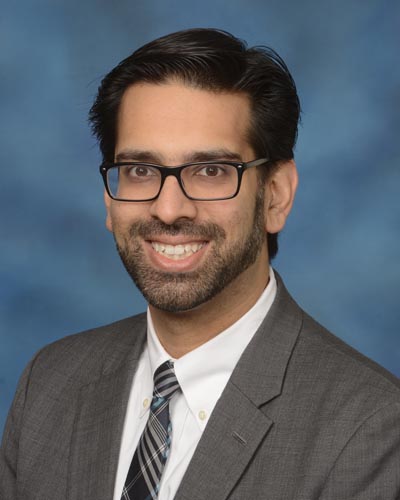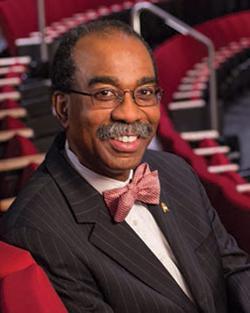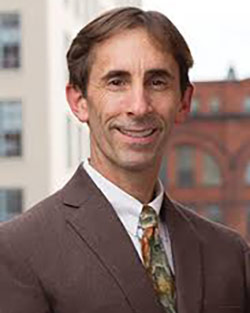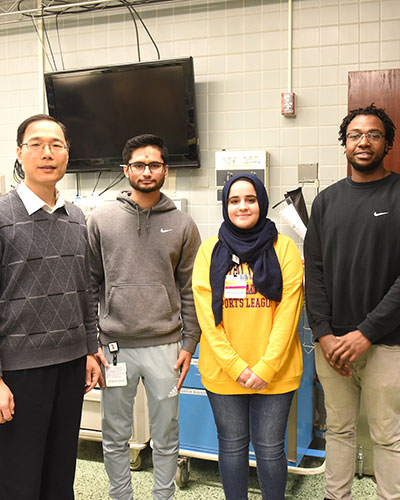March 22, 2021 | Karen Warmkessel
PCORI-Funded Initiative to Bring Together Patients, Doctors, and Other Key Stakeholders to Explore Use of Monitoring for Eligible Patients Versus Immediate Treatment

Overtreatment of prostate cancer has become a significant issue in recent years, especially as better imaging and other technologies have enabled doctors to distinguish more aggressive cancers from low-risk ones. Aggressive cancers need to be immediately treated with surgery and radiation therapy, whereas low-risk ones can be monitored without immediate treatment to determine whether they will grow and become potentially life-threatening.
Current clinical guidelines recommend active surveillance to manage low-risk prostate cancer, starting treatment only if the cancer progresses. Data has shown in properly selected patients that survival is equivalent with this approach, compared to immediate treatment. Less than half of eligible men, however, opt for active surveillance, and about 30 percent of men who initially choose this approach decide to pursue treatment even if there is no evidence their cancer is progressing.

“The question is, ‘Why are we not doing active surveillance in suitable patients when it’s well demonstrated to be effective, safe, and a good way to avoid the complications of treatment,” said M. Minhaj Siddiqui, MD, an associate professor of surgery at UMSOM and director of urologic oncology and robotic surgery at the University of Maryland Marlene and Stewart Greenebaum Comprehensive Cancer Center (UMGCCC), located at the University of Maryland Medical Center.
“We want to identify what the issues are and what type of work needs be done to improve the utilization of active surveillance for men with prostate cancer in the United States,” said Dr. Siddiqui, who is leading the project. “We are bringing together patients, spouses and caregivers, advocacy organizations, prostate cancer specialists, and professional organizations to develop a list of high-impact, answerable questions to guide future research on this issue.”
“To my knowledge, this is the first time that a project of this magnitude and organizational backing is being done to address active surveillance of prostate cancer,” he said.

“Overtreatment of prostate cancer is a very real concern, and we need to have a better understanding of why many men decide against close monitoring of their cancer in favor of often medically unnecessary treatment,” said Dean E. Albert Reece, MD, PhD, MBA, Executive Vice President for Medical Affairs, UM Baltimore, and the John Z. and Akiko K. Bowers Distinguished Professor at the University of Maryland School of Medicine. “This research is an important first step in identifying and addressing some of the underlying issues in a national forum.”
The initiative includes the creation of a diverse advisory board and putting together a national conference to discuss the challenges of utilizing active surveillance and identify potential areas for future research.
Dr. Siddiqui said there are many reasons that men forgo or discontinue active surveillance, including their own preferences, physician counseling, influence of families or support networks, distrust of delaying treatment, and lack of access to reliable information.

“When men are diagnosed with prostate cancer, they may hear the word cancer and think they need to ‘do something’ to treat it immediately. Doctors, eager to offer patients a ‘cure,’ may recommend treatment that can result in side effects such as incontinence and reduced sexual function,” Scott said. “Active surveillance is often not part of the discussion.” He added, “One of the most critical questions we need to address is whether there are things men can do to delay progression while on active surveillance, thus optimizing their quality of life.”

The research is part of a portfolio of projects that PCORI has funded to help develop a community of patients and other stakeholders equipped to participate as partners in comparative clinical effectiveness research (CER) and disseminate PCORI-funded research results. Through the Engagement Award Program, PCORI is creating an expansive network of individuals, communities, and organizations interested and able to participate in, share, and use patient-centered CER.
About the University of Maryland School of Medicine
Now in its third century, the University of Maryland School of Medicine was chartered in 1807 as the first public medical school in the United States. It continues today as one of the fastest growing, top-tier biomedical research enterprises in the world -- with 46 academic departments, centers, institutes, and programs, and a faculty of more than 3,000 physicians, scientists, and allied health professionals, including members of the National Academy of Medicine and the National Academy of Sciences, and a distinguished two-time winner of the Albert E. Lasker Award in Medical Research. With an operating budget of more than $1.2 billion, the School of Medicine works closely in partnership with the University of Maryland Medical Center and Medical System to provide research-intensive, academic and clinically based care for nearly 2 million patients each year. The School of Medicine has nearly $600 million in extramural funding, with most of its academic departments highly ranked among all medical schools in the nation in research funding. As one of the seven professional schools that make up the University of Maryland, Baltimore campus, the School of Medicine has a total population of nearly 9,000 faculty and staff, including 2,500 students, trainees, residents, and fellows. The combined School of Medicine and Medical System (“University of Maryland Medicine”) has an annual budget of over $6 billion and an economic impact of nearly $20 billion on the state and local community. The School of Medicine, which ranks as the 8th highest among public medical schools in research productivity (according to the Association of American Medical Colleges profile) is an innovator in translational medicine, with 606 active patents and 52 start-up companies. In the latest U.S. News & World Report ranking of the Best Medical Schools, published in 2021, the UM School of Medicine is ranked #9 among the 92 public medical schools in the U.S., and in the top 15 percent (#27) of all 192 public and private U.S. medical schools. The School of Medicine works locally, nationally, and globally, with research and treatment facilities in 36 countries around the world. Visit medschool.umaryland.edu
About the University of Maryland Marlene and Stewart Greenebaum Comprehensive Cancer Center
The University of Maryland Marlene and Stewart Greenebaum Comprehensive Cancer Center (UMGCCC) is a National Cancer Institute-designated Comprehensive Cancer Center in Baltimore. The center is a joint entity of the University of Maryland Medical Center and University of Maryland School of Medicine. It offers a multidisciplinary approach to treating all types of cancer and has an active cancer research program. It is ranked among the top cancer programs in the nation by U.S. News & World Report. www.umgccc.org.
Contact
Karen Warmkessel
University of Maryland Medical System/Medical Center
Media Relations Senior Manager
110 S. Paca Street., 9th floor
Baltimore, MD 21201
office: (410) 328-8919
mobile: (410) 404-1532
kwarmkessel@umm.edu
Related stories

Monday, January 28, 2019
MPower Paves the Way for UM Bioengineering Students
The University of Maryland Strategic Partnership: MPowering the State has gained significant momentum, delivering enhanced economic, academic, and research benefits for the people of Maryland and beyond. This strategic partnership is a structured research and academic collaboration between the University of Maryland, Baltimore (UMB) and the University of Maryland, College Park (UMCP). Leveraging the sizeable strengths and complementary missions of both institutions, MPower has created many unique educational opportunities for students at both universities.
